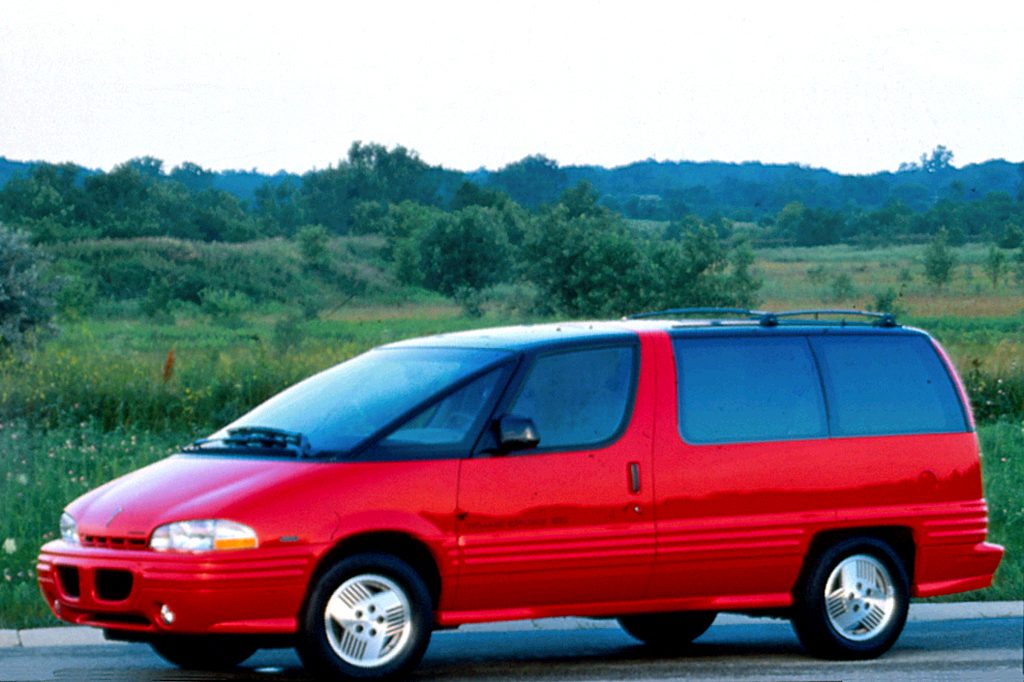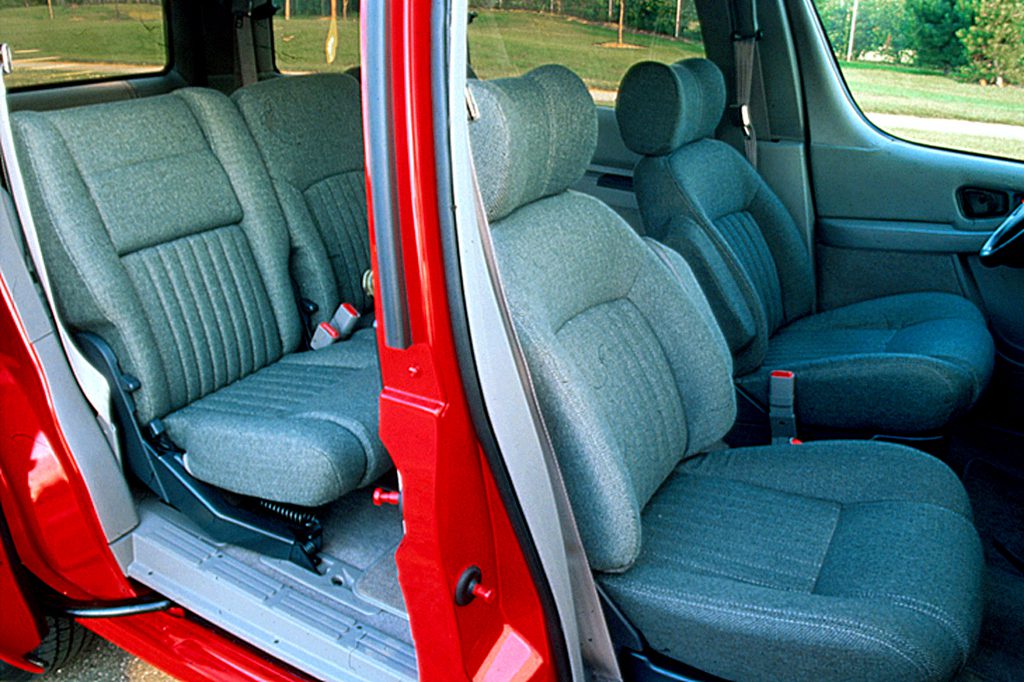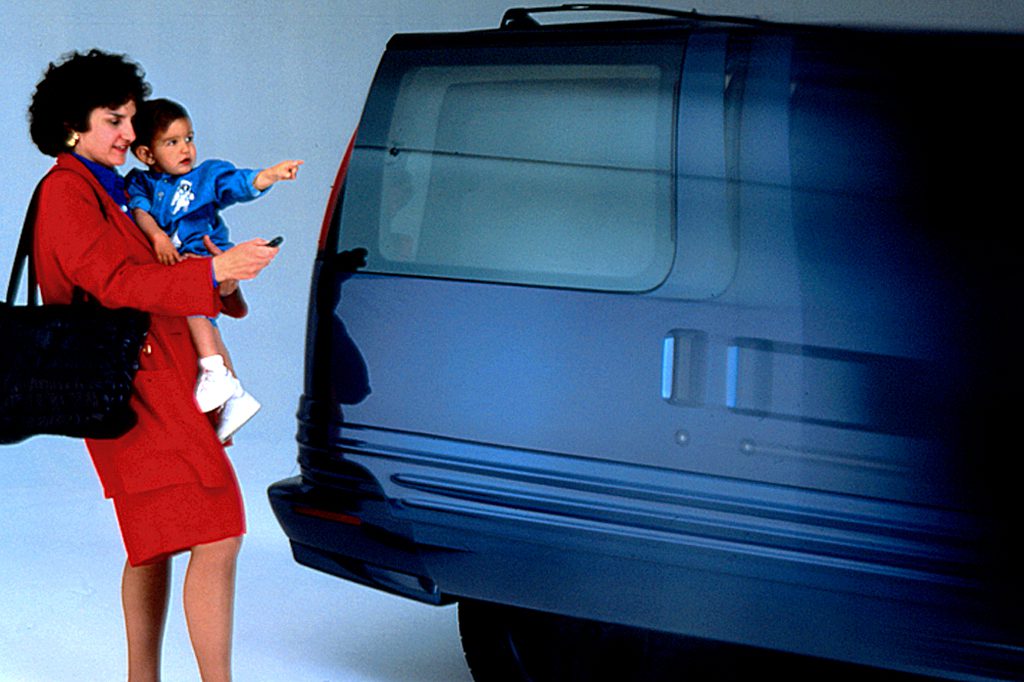| Minivan; Built in USA |
|
|
| Good condition price range: $1,000 – $2,000* |

1996 Pontiac Trans Sport

1990 Pontiac Trans Sport SE

1994 Pontiac Trans Sport

1996 Pontiac Trans Sport SE rear seat

1994 Pontiac Trans Sport power-slicing door
| Pros: |
|
| Cons: |
|
Overall, the Trans Sport is a capable and stylish minivan. It provides good interior room, the safety of an airbag and a power sliding door on newer models, plus less boxy styling. While the Trans Sport is no match overall for Chrysler’s new minivans, it’s reasonably priced and a good value in rust-belt areas that experience severe winters.
Overview
Pontiac’s version of the new GM minivan shared its front-drive layout with the Chevrolet Lumina APV and Oldsmobile Silhouette, all of which had a 120-horsepower 3.1-liter V6 hooked to a 3-speed automatic transmission. The body panels of the 1990-96 versions were made of a fiberglasslike composite material, designed to absorb minor impacts and spring back without damage. Trans Sport was available in base 5-passenger and SE 6-passenger trim levels. Both featured reclining front bucket seats. Versatile interiors seated up to seven.
Yearly Updates
| 1991 Trans Sport Trans Sports get larger sideview mirrors, with power adjustment standard on SE models. Also, all models get a stainless-steel exhaust system while a roof luggage carrier is a new option. |
| 1992 Trans Sport Last year’s SE version becomes the base model, retaining the 120-horsepower 3.1-liter V6. Standard on a new GT is GM’s 165-horsepower 3.8-liter V6, coupled to an electronic 4-speed automatic. Finally, standard on all models are antilock brakes. |
| 1993 Trans Sport After one year, the GT model is dropped, but an even more-powerful engine is made available. The optional 3.8-liter V6 provides five more horsepower and five extra pound-feet of torque–to 170 and 225, respectively. Among Trans Sport’s new options are steering-wheel-mounted auxiliary radio controls and leather upholstery. |
| 1994 Trans Sport A shorter nose and a new driver-side airbag are the primary changes Pontiac makes to the 1994 Trans Sport. The new front end cuts two inches off the minivan’s overall length, but still includes integrated fog lamps. At the rear, a new center high-mount stoplight has been added. A power sliding side door becomes an option for the Trans Sport. The power sliding door can be activated by buttons inside the vehicle or on the remote-entry keyfob and is designed to stop and reverse direction when it encounters an obstacle. |
| 1995 Trans Sport A new brake/transmission-shift interlock leads the short list of changes to Pontiac’s plastic-bodied minivan. |
| 1996 Trans Sport This year’s only engine is a new 180-horsepower 3.4-liter V6. The new engine comes paired with just one transmission–a 4-speed automatic. Trans Sport would be all new for ’97. |
